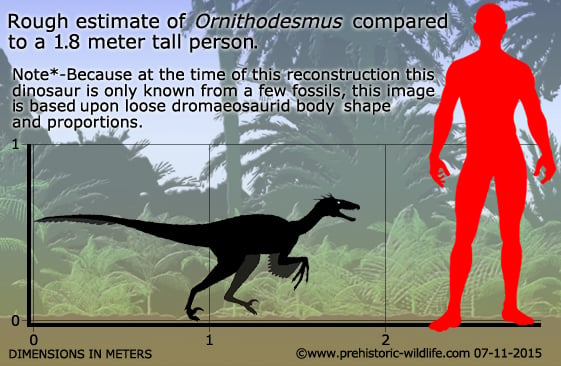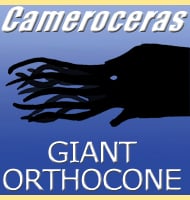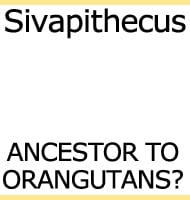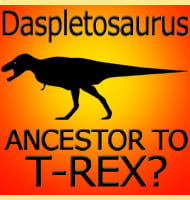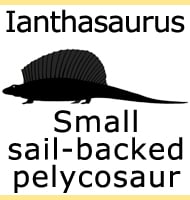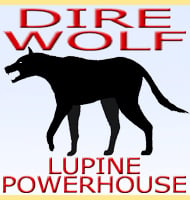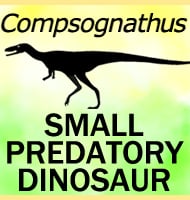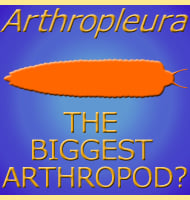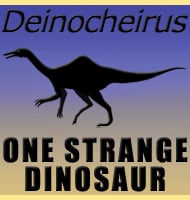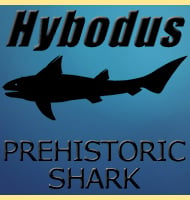In Depth
The story of Ornithodesmus can be a confusing one as for a long time the genus was credited with being a pterosaur, whereas we now know this was a mistake. It all began in 1887 when Harry Govier Seeley described a set of six sacral vertebrae that he thought belonged to a bird. Seeley came up with the name Ornithodesmus which means (bird link). Then later in 1887 John Hulke (in a paper without his name on it) made the suggestion that Ornithodesmus was not a bird but actually a pterosaur. Seeley later conceded this and he too began to classify Ornithodesmus as a pterosaur, even creating a second species O. latidens in 1901. Seeley however still thought the original holotype specimen of Ornithodesmus was very bird like, and so began to propose the notion that birds and pterosaurs shared a common ancestry (something we now consider to simply not be true).
The second species of Ornithodesmus was based upon far more complete pterosaur remains, and for this reason O. latidens was the public face presented to the wider public. Then in 1993 a startling discovery was made concerning the holotype specimen. In a 1993 study concerning the original sacral vertebrae that had been used to establish the type species in 1887, Stafford C. Howse and Andrew Milner concluded that the holotype was not a bird nor even a pterosaur, but actually a theropod dinosaur. Howse and Milner considered the holotype to have come from a small troodontid, but later research by Peter Makovicky and Mark Norell showed that it was actually a dromaeosaurid, and while others have speculated that this specimen may have actually been a ceratosaur or coelophysid, most palaeontologists now agree that the holotype specimen of Ornithodesmus was a dromaeosaur.
Because the holotype specimen of Ornithodesmus is now confirmed as a dromaeosaurid dinosaur, all of the pterosaur fossils once attributed to the genus, including the second species have now been had a new genus created for them called Istiodactylus. Details about the lifestyle of Ornithodesmus are uncertain due to the lack of fossil remains for the genus, but we do know that as a dromaeosaurid dinosaur Ornithodesmus would have been a lightly built predator of small animals, featuring a sickle shaped killing claw on the second toe of each foot. Comparison to the body proportions of other dromaeosaurid dinosaurs indicates that Ornithodesmus would have grown to just under two meters in length.
Further Reading
- On a sacrum, apparently indicating a new type of Bird, Ornithodesmus cluniculus, Seeley, from the Wealden of Brook. - Quarterly Journal of the Geological Society of London, 42: 206-211. - Harry Govier Seeley - 1887. - Discussion (on Ornithodesmus and Patricosaurus). - Quarterly Journal of the Geological Society of London, 43: 219-220. - Anon - 1887. - Dragons of the Air. - London: Methuen & Co. 239 pp. - Harry Govier Seeley - 1901. - The skeleton of Ornithodesmus latidens; an Ornithosaur from the Wealden Shales of Atherfield (Isle of Wight). - Quarterly Journal of the Geological Society, 69(1-4): 372-422. - R. W. Hooley - 1913. - Ornithodesmus—a maniraptoran theropod dinosaur from the Lower Cretaceous of the Isle of Wight, England. - Palaeontology, 36: 425–437. - S. C. B. Howse & A. R. Milner - 1993. - Important features of the dromaeosaur skeleton: Information from a new specimen. - American Museum Novitates, 3215: 1-28. - M. A. Norell & P. Makovicky - 1997. - Saurischian dinosaurs: theropods, by D. M. Martill, D. Hutt & D. Naish. In Dinosaurs of the Isle of Wight. The Palaeontological Association, Field Guides to Fossils. 10, 242-309, D. M. Martill & D. Naish (eds) -2001. - Dinosaurs of Great Britain and the role of the Geological Society of London in their discovery: basal Dinosauria and Saurischia. - Journal of the Geological Society, London, 164(3): 493-510. - D. M. Martill & D. Naish - 2007.
